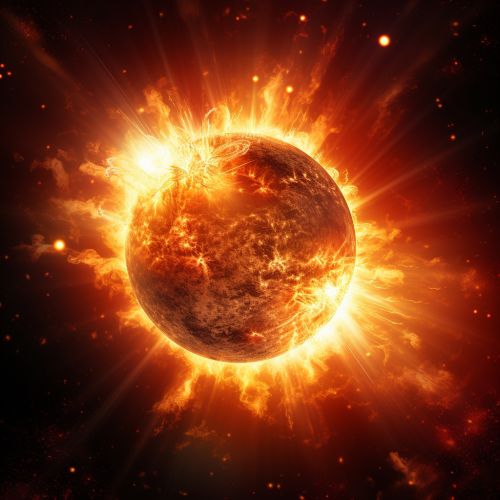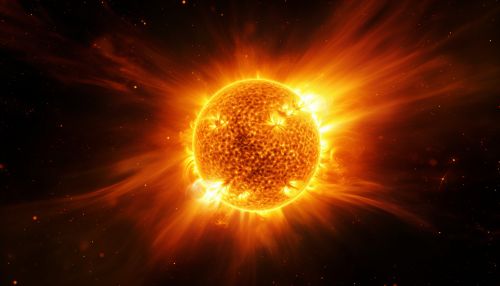Space weather
Introduction
Space weather refers to the environmental conditions in Earth's magnetosphere, thermosphere, mesosphere, and exosphere due to the Sun and the solar wind that can influence the functioning and reliability of spaceborne and ground-based systems and services, or endanger property or human health. It is a branch of space physics and aeronomy, or heliophysics which is the science that studies the Sun and its interaction with the Earth's atmosphere.
Solar Wind
The solar wind, a stream of charged particles flowing outwards from the Sun, creates a bubble in the interstellar medium known as the Heliosphere. The solar wind interacts with the Earth's magnetic field and can change its shape and dynamics depending on the intensity of the solar wind. This interaction can lead to disturbances in the Earth's magnetic field, known as geomagnetic storms.


Solar Flares
Solar flares are brief eruptions of intense high-energy radiation from the Sun's surface. They are caused by the sudden release of magnetic energy stored in the Sun's atmosphere. Solar flares can cause disturbances in the layer of the Earth's atmosphere known as the Ionosphere, which can disrupt radio communications and GPS.
Coronal Mass Ejections
Coronal mass ejections (CMEs) are significant releases of plasma and magnetic field from the solar corona. They often follow solar flares and are normally present during a solar prominence eruption. CMEs can cause geomagnetic storms that may disrupt Earth's magnetosphere, affecting infrastructure such as power grids, satellite communications, and navigation systems.
Geomagnetic Storms
A geomagnetic storm is a temporary disturbance of the Earth's magnetosphere caused by a solar wind shock wave and/or cloud of magnetic field which interacts with the Earth's magnetic field. The increase in the solar wind pressure initially compresses the magnetosphere and the solar wind's magnetic field interacts with the Earth’s magnetic field and transfers an increased energy into the magnetosphere. Both interactions cause an increase in movement of plasma through the magnetosphere (driven by increased electric fields inside the magnetosphere) and an increase in electric current in the magnetosphere and ionosphere.
Space Weather Forecasting
Space weather forecasting is the prediction of solar flares, CMEs, and other solar activities that can impact Earth. These forecasts are important for protecting satellites, astronauts, and infrastructure on Earth. The primary agency for space weather forecasting is the Space Weather Prediction Center (SWPC) of the National Oceanic and Atmospheric Administration (NOAA).
Impact on Earth and Infrastructure
Space weather events can cause a range of effects on Earth. These can include power grid failures, disruption to satellite communications and navigation systems, increased radiation exposure to astronauts and air passengers, and more. Understanding and predicting space weather events is therefore crucial for mitigating their impact on our infrastructure and health.
